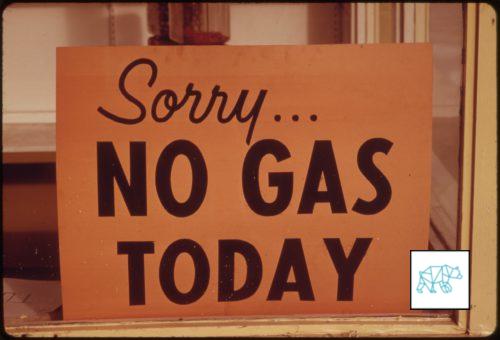
15 Aug What drives oil prices? The Supply side: OPEC vs non-OPEC
Points to take away from this read
OPEC and non-OPEC countries have different agendas when it comes to oil production.
Non-OPEC are more inclined to follow market conditions.
OPEC tries to keep the oil markets regulated and provides a cushion for the world’s oil supply.
OPEC is in hands of National Oil Companies.
Non-OPEC is in hands of Investor-owned Oil Companies and care more about their shareholder value.
Disclaimer
All the information here I looked up on the U.S. Energy Information Administration’s website and some from Wikipedia. I am not pretending to come up with all this information myself. The only thing I did was go through the information and put together pieces of it to make it easier to understand and access for myself. This, I want to share with you and I hope it benefits you in some way.
Please go over to these respective websites for more information:
EIA on ‘What drives Crude Oil’
https://www.eia.gov/finance/markets/crudeoil/
Wikipedia on ‘list of countries by oil production’
https://en.wikipedia.org/wiki/List_of_countries_by_oil_production
https://commons.wikimedia.org/wiki/File:Oil_producing_countries_map.png
So here it goes…
Where does all the oil come from?
When we think of oil we usually think of oil sheiks and Arab states of the Persian Gulf. Most think these are the only OPEC (Organization for the Petroleum Exporting Countries) states, but as of May 2017, there are 14 members of OPEC and not all are Gulf states.
Keeping it simple
As I tried explaining in the disclaimer this post is just going to be the summarization of ‘facts’ I have found on the internet. Sort of like a cheat sheet for anything on the supply side of crude oil. The sources I have mentioned in the disclaimer so head on over and look up more details if you wish.
Current members OPEC
- Saudi Arabia 10,460,710 bbl/day
- Iraq 4,451,516 bbl/day
- Iran 3,990,956 bbl/day
- United Arab Emirates 3,106,077 bbl/day
- Kuwait 2,923,825 bbl/day
- Venezuela 2,276,967 bbl/day
- Nigeria 1,999,885 bbl/day
- Angola 1,769,615 bbl/day
- Qatar 1,522,902 bbl/day
- Algeria 1,348,361 bbl/day
- Ecuador 548,421 bbl/day
- Libya 384,686 bbl/day
- Equatorial Guinea 227,000 bbl/day
- Gabon 210,820 bbl/day
OPEC totals 35,221,740 bbl/day of the 80,622,287 bbl/day making it 44% of the total world oil production.
Non-OPEC countries
- Russia 10,551,497 bbl/day
- United States 8,875,817 bbl/day
- China 3,980,650 bbl/day
- Canada 3,662,694 bbl/day
- Brazil 2,515,459 bbl/day
- Mexico 2,186,877 bbl/day
- Norway 1,647,975 bbl/day
- Kazakhstan 1,595,199 bbl/day
- Oman 1,006,841 bbl/day
- United Kingdom 939,760 bbl/day
And many others. Look here for the full list:
https://en.wikipedia.org/wiki/List_of_countries_by_oil_production
OPEC vs Non-OPEC on Oil Production
- World production
- OPEC 40%
- Non-OPEC 60%
- Market share internationally traded oil
- OPEC 60% and thus has more influence on international oil prices
- Non-OPEC 40%
- Oil production regulation
- OPEC has a central coordination, non-OPEC countries make independent decisions.
- OPEC actively sets production targets for its members to manage oil production
- Indications of changes in production by OPEC’s largest producer Saudi Arabia frequently influence prices
- Not all OPEC members comply with production targets
- Non-OPEC countries usually follow market conditions for scaling up or down in production
- Who controls the oil production?
- OPEC is mostly in hands of National Oil Companies (NOCs)
- Non-OPEC mostly in hands of Investor-owned Oil Companies (IOCs)
- IOCs care more about shareholder value, NOCs have to consider nationwide factors as well. Because non-OPEC countries are driven by economic factors they respond to the market conditions in producing oil.
- Spare capacity as defined by the EIA is the volume in production that can be brought on within 30 days and sustained for the next 90 days.
- OPEC’s biggest player Saudi Arabia will usually keep about 1.5 to 2 million barrels per day in spare capacity on hand for market management.
- This spare capacity is an indicator of how well the world can react to potential crises that decrease oil supply.
- Available production capacity by OPEC members is often used to determine tightness of global oil markets.
- Non-OPEC usually operates at or near full capacity and thus have little spare capacity.
- OPEC’s biggest player Saudi Arabia will usually keep about 1.5 to 2 million barrels per day in spare capacity on hand for market management.
- Oil supplies
- When non-OPEC supplies drop there is more need for the OPEC crude oil and thus increases OPEC’s influence on oil prices.
- Increases in non-OPEC supply contribute to lower oil prices
- Disruptions of non-OPEC oil production reduce global supply and can lead to increase in oil prices
- Disruptions can take a long time and the uncertainty of when it will end increases oil price volatility
- Unexpected outages can reduce OPEC production
- The amount of the disruption, how quickly it occurs, and the uncertainty of restoring the output have considerable influence on oil prices.
- Cost of finding and producing oil
- OPEC countries have lower cost conventional oil resources.
- Non-OPEC has relatively high costs in finding and producing oil
- Because it costs them more, they are the pioneers in unconventional ways of finding and producing oil. They are the leaders in finding new technologies.
- Other liquids
- An alternative to oil in some industries are Natural Gas Liquids (NGLs). This is another factor that can keep an increase in oil prices down.
- NGLs aren’t included in OPEC production allocations and provide a substantial volume increase to world liquids supply.
- Future expectations
- Oil prices rely heavily on supply and demand and what the expectations are for future supply numbers.
- Downward revisions in expectations on non-OPEC production contributes to upward pressure on oil prices.
- Because market conditions are uncertain and rapidly changing estimating production targets is especially hard.
- OPEC can also have significant lag responding to market conditions and thus in adjusting the production targets, which also impacts oil prices.
- Oil prices rely heavily on supply and demand and what the expectations are for future supply numbers.
- Geopolitics
- Geopolitical events have historically caused reductions in oil production by OPEC countries and given that OPEC is important to world oil markets events that entail an actual or future potential loss of oil supplies can produce strong reactions in oil prices.
Thanks for reading
I hope this post helps to make the relations between the OPEC members and non-OPEC countries more clear. Also, I hope it helps with understanding their relation to oil prices.
If you like what I’m doing here please leave a quick comment. It will be much appreciated. Trolls are still welcome as well. And subscribe to my newsletter if you like.





No Comments